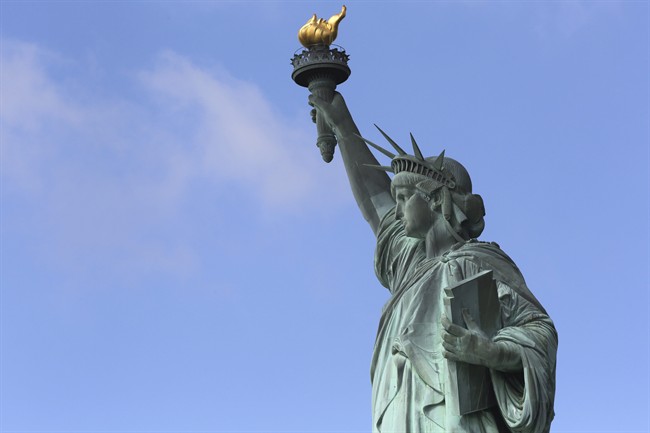She’s a timeless symbol of democracy and freedom, overlooking the port where millions of immigrants arrived on U.S. shores.

But historians say Lady Liberty evolved from another statue designed to be a peasant Arab woman overlooking the Suez Canal in Egypt.
An article recently published by The Daily Beast contributor Michael Daly concludes that because French sculptor Frederic August Bartholdi conceived the statue as an Arab woman, calling it “Egypt Carrying the Light to Asia,” it stands to conclude that she would have been a Muslim woman. (Other media outlets have come to similar conclusions.)
But Edward Berenson, professor of history at New York University, says it’s not accurate to say that the Statue of Liberty was originally conceived as a Muslim woman.
“That’s a serious oversimplification,” said Berenson.
“There’s a relationship between the Egyptian statue that Bartholdi first conceived in the late 1860s. But that statue changed as it migrated to the United States. The original version of the statue made sense for Egyptian society. It wouldn’t have made sense for America.”
WATCH: Statue of Liberty historian Edward Berenson discusses the relationship between Bartholdi’s design for the Egyptian statue and the Statue of Liberty.
Barry Moreno, the historian at the Statue of Liberty National Monument, disagrees that the Egyptian statue and the Statue of Liberty have a relationship at all.
“They’re both female figures but they’re not the same figure.”
But both historians agree that it is incorrect to claim that Bartholdi sailed to the U.S. after he failed to sell the Arab peasant statue to Egypt after its ruler Isma’il Pasha ran out of money.
“He went back to France and was there for about a year or so before he went to the United States,” said Berenson, saying Bartholdi eventually fled Europe to avoid the revolution. “He didn’t go directly from Egypt to the United States.”
Moreno rejects the idea that Bartholdi imitated the Egyptian statue as the basis for the famed New York City monument.
“It trivializes the history of both of Bartholdi’s projects,” he said.
Berenson does admit that the two statues were indeed separate projects, but believes the relationship between the two is unmistakable.
“Bartholdi took the sketches he had made for the Egyptian statue and changed them. He worked from that model,” said Berenson.





Comments